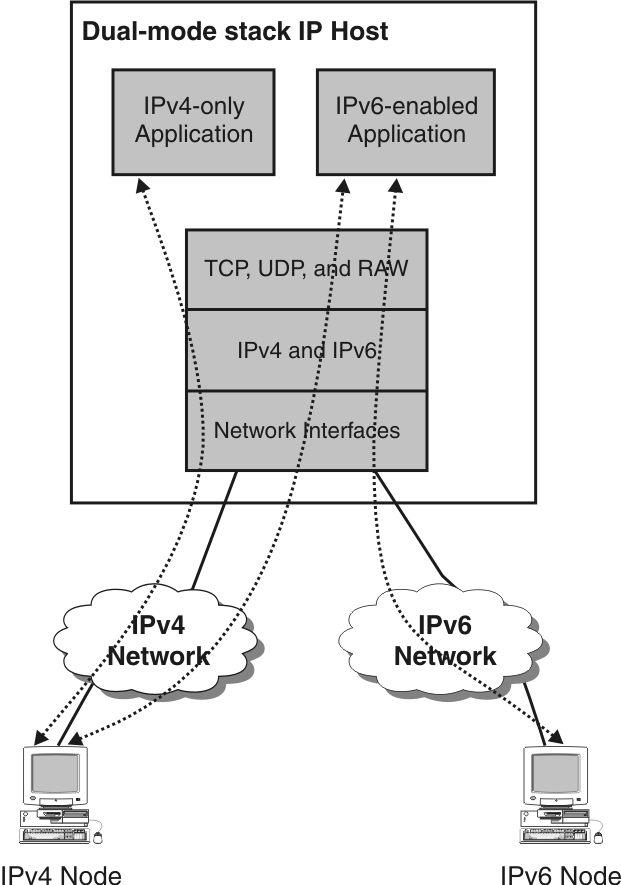 z/OS Communications Server: IPv6 Network and Application Design Guide
z/OS Communications Server: IPv6 Network and Application Design Guide
 z/OS Communications Server: IPv6 Network and Application Design Guide
z/OS Communications Server: IPv6 Network and Application Design Guide
|
Previous topic |
Next topic |
Contents |
Contact z/OS |
Library |
PDF
Application migration and coexistence overview z/OS Communications Server: IPv6 Network and Application Design Guide SC27-3663-00 |
||||||||||
|
Many IPv6 stacks support both IPv4 and IPv6 interfaces and are
capable of receiving and sending native IPv4 and IPv6 packets over
the corresponding interfaces. This type of TCP/IP stack is generally
referred to as a dual-mode stack IP node. This does not mean that
there are two separate TCP/IP stacks running on this type of node.
It means that the TCP/IP stack has built-in support for both IPv4
and IPv6. In this topic, the term dual-mode stack or IP node is a
TCP/IP stack that supports both IPv4 and IPv6 protocols.
Figure 1. Dual-mode stack IP host
 For a multihomed dual-mode IP host, it is a likely configuration that the host has both IPv4 and IPv6 interfaces over which requests for host-resident applications are received or sent. Older AF_INET applications can communicate using IPv4 addresses only. IPv6-enabled applications that use AF_INET6 sockets can communicate using both IPv4 and IPv6 addresses (on a dual-mode host). AF_INET and AF_INET6 applications are able to communicate with one another, but only using IPv4 addresses. If the socket libraries on the IPv6-enabled host are updated to
support IPv6 sockets (AF_INET6), applications can be IPv6 enabled.
When an application on a dual-mode stack host is IPv6 enabled, the
application is able to communicate with both IPv4 and IPv6 partners.
This is true for both clients and server on a dual-mode stack host.
IPv6-enabling both sockets libraries and applications on dual-mode hosts therefore becomes a migration concern. As soon as IPv6-only hosts are being deployed in a network, applications on those IPv6-only nodes cannot communicate with the IPv4-only applications on the dual-mode hosts, unless one of multiple migration technologies are implemented either on intermediate nodes in the network or directly on the dual-mode hosts. 


|
 Copyright IBM Corporation 1990, 2014 Copyright IBM Corporation 1990, 2014 |